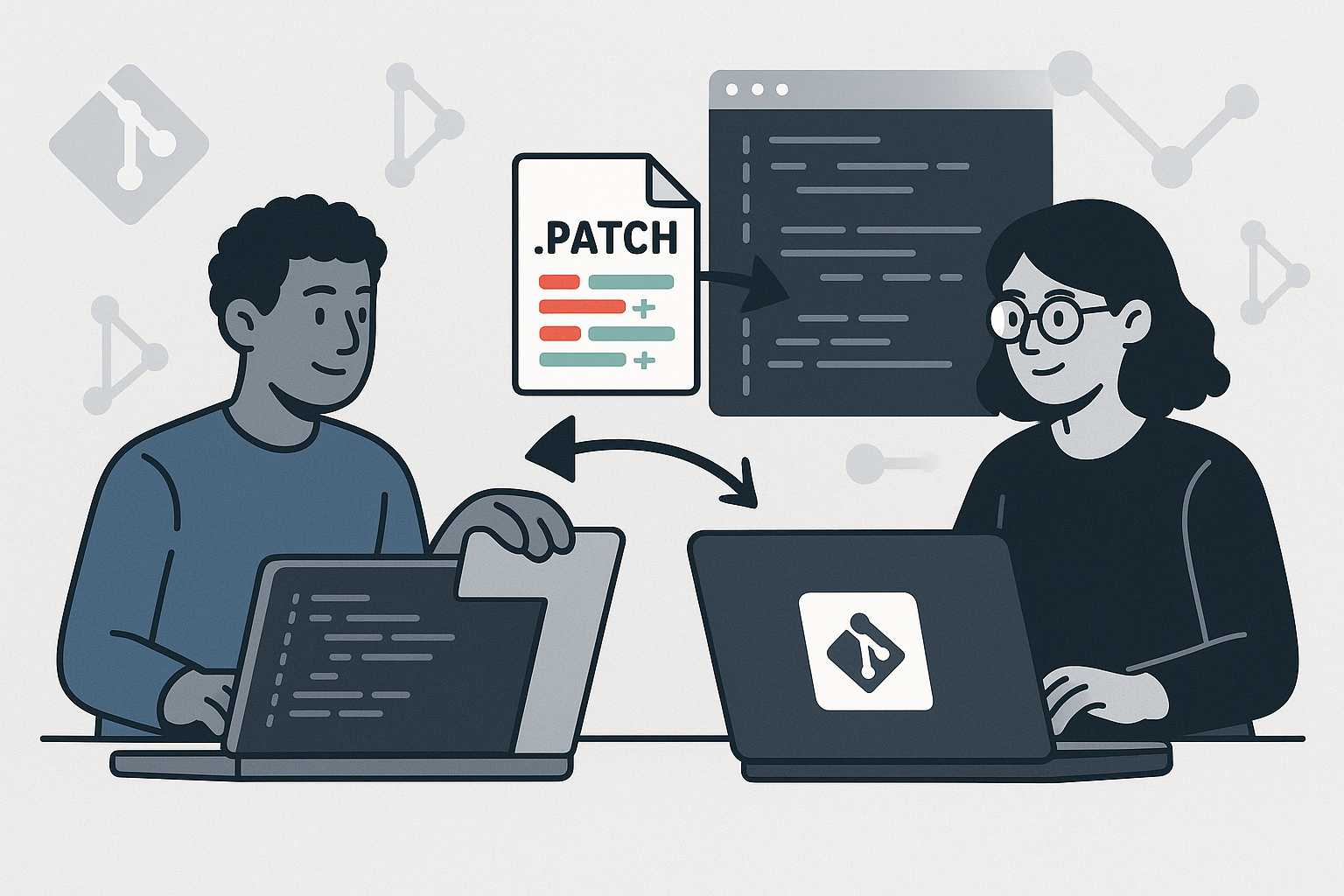If you’re working on a software team using Git, you might think of code reviews and collaboration as something that always requires pushing branches to a remote repository or using pull requests. But did you know there’s another powerful way to share changes—using patch files? Let me show you how patch files work, why they’re useful, and how you can integrate them into your workflow for streamlined, offline, or even cross-repository collaboration.
What is a Git Patch File?
A patch file is a text file that contains a description of the differences between two versions of a set of files. Git can generate these files to represent one or more commits, allowing someone else to apply the exact changes to their version of the repository, even if you can’t share branches directly (say, when working with forks, strict access, or even email-based reviews).
Why Use Patch Files?
- Offline reviews or contributions: Send your changes in a single file over email or chat—even if the recipient has no access to your branch.
- Granular sharing: Share or save only specific commits or changes.
- Record keeping: Archive changes or code reviews for auditing or reference.
Creating a Patch File
Suppose you want to send your last commit for review. Just run:
git format-patch -1 HEAD
This will create a file like 0001-My-feature-description.patch. To create patches for multiple commits, use:
git format-patch <base-commit>
For instance, to save patches for the last 3 commits:
git format-patch -3
Applying a Patch File
Your collaborator receives the patch file. To apply it:
git apply 0001-My-feature-description.patch
Or, to commit the changes with original commit metadata:
git am 0001-My-feature-description.patch
Tips for Success
- Keep history linear: If possible, base your patches on a shared commit.
- Test locally: Always run tests after applying to catch any merge or context issues.
- Use with code review tools: Many platforms (like Gerrit or Review Board) support importing patch files.
When Should You Use Patch Files?
Patch files aren’t for every workflow, but they shine when sharing code across forks, with external contributors, or when working offline. They’re also great for maintaining a simple audit trail or for use in scripted automation.
Next time you want to share a set of changes or need a portable way to submit code, reach for git format-patch. Whether it’s for review, archival, or collaboration, mastering patches is another great skill to keep in your Git toolbox.
Happy patching! —Joe Git


Leave a Reply